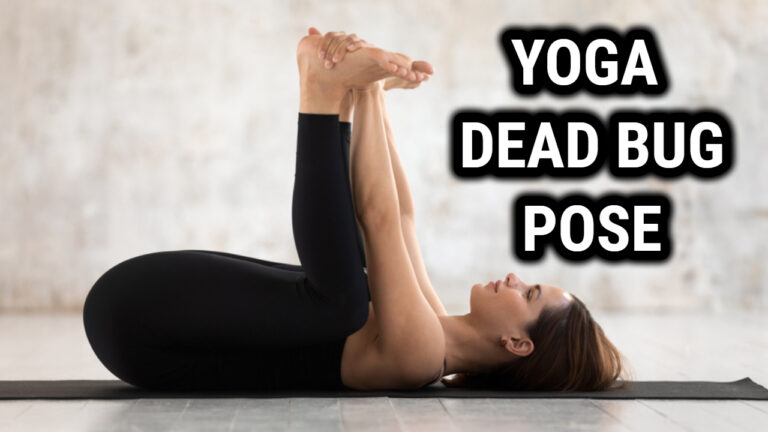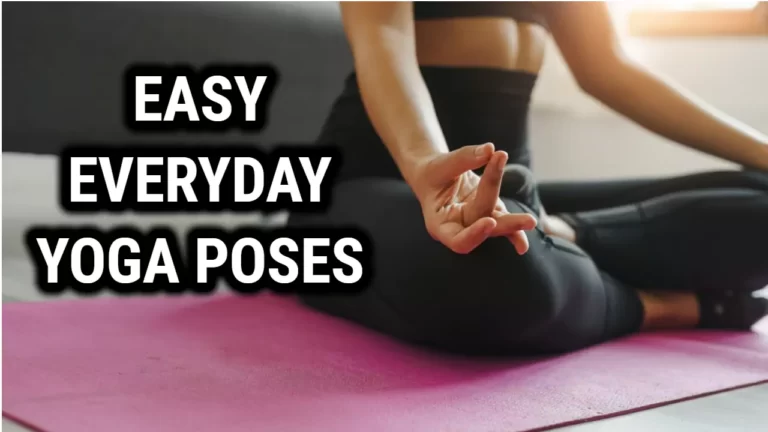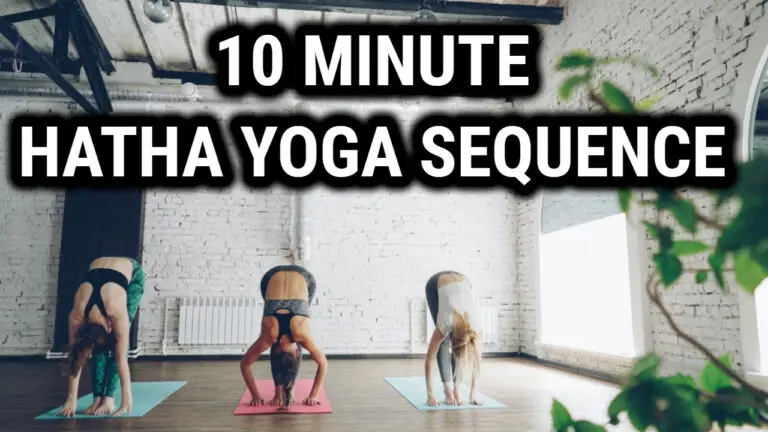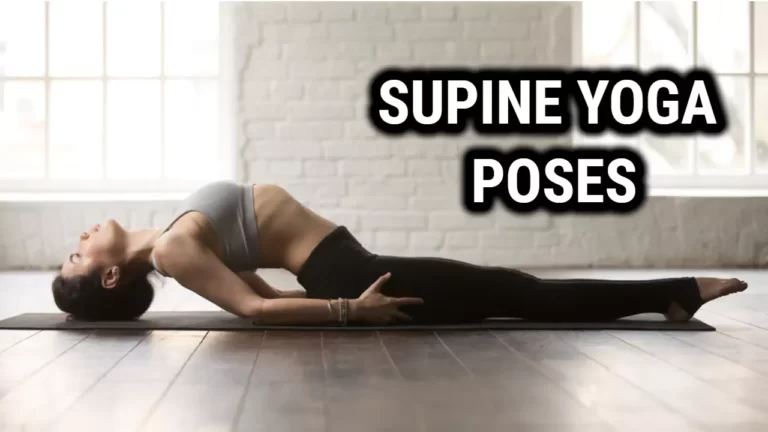Yin Yoga Poses for Relaxation and Flexibility

Yin Yoga is a slow-paced, meditative style of yoga that involves holding poses for extended periods of time. The practice is designed to target the connective tissues of the body, such as the ligaments, tendons, and fascia, with the aim of increasing circulation, improving flexibility, and reducing stress.
Unlike other forms of yoga that focus on building strength and endurance, Yin Yoga poses are typically held for three to five minutes, and sometimes even longer. This extended hold time allows the body to relax and release tension, while also providing an opportunity to cultivate a deeper sense of mindfulness and introspection.
Some of the most popular Yin Yoga poses include Supported Child’s Pose, Melting Heart Pose, and Saddle Pose. Each pose has its own unique benefits and can be modified to suit the needs of the individual practitioner. Whether you are a beginner or an experienced yogi, incorporating Yin Yoga into your practice can help you find greater balance, calm, and relaxation in your daily life.
Benefits of Yin Yoga Poses
Yin Yoga is a practice that involves holding poses for a longer period of time, typically 3-5 minutes or more. Unlike other yoga practices that focus on movement, Yin Yoga is more about stillness and relaxation. Here are some benefits of practicing Yin Yoga poses:
- Improved flexibility: Holding poses for longer periods of time can help to stretch and lengthen muscles, leading to improved flexibility over time.
- Reduced stress: Yin Yoga can help to calm the mind and reduce stress levels. It can also help to promote relaxation and improve sleep.
- Improved circulation: Holding poses for longer periods of time can help to improve blood flow and circulation throughout the body.
- Improved joint health: Yin Yoga can help to lubricate joints and improve joint health over time.
- Improved mental focus: Yin Yoga can help to improve mental focus and concentration, as well as develop breath awareness.
- Improved emotional balance: Yin Yoga can help to balance emotions and promote a sense of inner peace and calm.
- Improved connective tissue health: Holding poses for longer periods of time can help to stimulate and strengthen connective tissue, leading to improved overall health and wellness.
Overall, Yin Yoga can be a great practice for those looking to improve flexibility, reduce stress, and promote relaxation and emotional balance. It is also a great complement to other forms of yoga and exercise, and can help to improve overall physical and mental health and wellness.
How to Practice Yin Yoga Poses
Yin yoga is a practice that involves holding poses for an extended period of time, typically 3-5 minutes or longer. Here are some tips on how to practice Yin yoga poses:
- Find your edge: In Yin yoga, it’s important to find the edge of your stretch without overdoing it. You should feel a stretch, but not pain or discomfort. If you feel pain, back off and find a more comfortable position.
- Stay still: Once you’ve found your edge, it’s important to stay still. This allows your body to fully relax into the pose and release any tension or tightness.
- Breathe: Focus on your breath while holding the pose. Take slow, deep breaths and try to relax your body with each exhale.
- Use props: Props such as blocks, bolsters, and blankets can help support your body in Yin yoga poses. Use them to find a comfortable position and deepen your stretch.
When practicing Yin yoga, it’s important to listen to your body and honor its limits. Don’t push yourself too hard and always work within your comfort zone. With regular practice, you’ll begin to feel more comfortable in the poses and experience the many benefits of Yin yoga.
10 Yin Yoga Poses to Try
Yin yoga is a gentle form of yoga that focuses on holding poses for an extended period of time. The practice is designed to help calm the mind and release tension in the body. Here are 10 Yin yoga poses to try:
| Pose | Description |
|---|---|
| 1. Butterfly Pose | This pose helps to stretch the hips and inner thighs. Sit on the floor with the soles of your feet together and gently press your knees towards the ground. |
| 2. Sphinx Pose | This pose helps to stretch the spine and chest. Lie on your stomach with your elbows under your shoulders and gently lift your chest off the ground. |
| 3. Dragon Pose | This pose helps to stretch the hips and quadriceps. Start in a lunge position with your front knee bent and your back leg straight. Lower your back knee to the ground and sink your hips towards the floor. |
| 4. Caterpillar Pose | This pose helps to stretch the hamstrings and lower back. Sit on the floor with your legs straight in front of you and gently fold forward over your legs. |
| 5. Shoelace Pose | This pose helps to stretch the hips and outer thighs. Sit on the floor with one leg bent in front of you and the other leg crossed over it. Gently fold forward over your legs. |
| 6. Half Butterfly Pose | This pose helps to stretch the hips and inner thighs. Sit on the floor with one leg straight in front of you and the other leg bent with the sole of your foot against your inner thigh. Gently fold forward over your straight leg. |
| 7. Child’s Pose | This pose helps to release tension in the back and neck. Start on your hands and knees and gently lower your hips back towards your heels while stretching your arms forward. |
| 8. Happy Baby Pose | This pose helps to stretch the hips and lower back. Lie on your back and bring your knees towards your chest. Grab the outsides of your feet and gently pull your knees towards your armpits. |
| 9. Seal Pose | This pose helps to stretch the chest and shoulders. Lie on your stomach with your hands under your shoulders and gently lift your chest off the ground. |
| 10. Legs Up the Wall Pose | This pose helps to calm the mind and relieve stress. Lie on your back with your legs straight up against a wall. |
Remember to breathe deeply and hold each pose for 3-5 minutes. Yin yoga is a practice of patience and surrender, so allow yourself to fully relax into each pose.
Also Read: Yoga Balance Poses To Improve Your Stability And Core Strength
Precautions and Safety Tips
While Yin Yoga is a gentle and therapeutic practice, it’s important to take certain precautions to prevent injury and ensure a safe experience. Here are some safety tips to keep in mind:
- Listen to your body: Pay attention to any discomfort or pain during the poses. If you experience any sharp pain or feel like you’re pushing your body beyond its limits, ease out of the pose or modify it.
- Use props: Props like blocks, bolsters, and blankets can help support your body and make the poses more accessible. Use them as needed to make the practice more comfortable.
- Don’t force the stretch: Yin Yoga is meant to be a gentle practice, so avoid pushing your body beyond its natural limits. Instead, allow gravity to do the work and relax into the pose.
- Stay hydrated: It’s important to drink plenty of water before and after your Yin Yoga practice to prevent dehydration and keep your body functioning properly.
- Consult your doctor: If you have any medical conditions or injuries, it’s important to consult with your doctor before starting a Yin Yoga practice. They can advise you on any modifications or precautions you should take.
By following these precautions and safety tips, you can enjoy the many benefits of Yin Yoga while minimizing the risk of injury or discomfort. Remember to always listen to your body and practice with mindfulness and awareness.
Duration Of Session
Yin yoga sessions typically last anywhere from 45 minutes to two hours. The duration of the session depends on the individual’s needs and goals, as well as the number of poses practiced during the session.
In general, each pose is held for three to five minutes, with some poses lasting longer. It is important to remember that yin yoga is a practice of mindful patience, so it is essential to take enough time between poses to settle into each one.
When planning a yin yoga session, you may want to consider how much time you have available. If you only have a short amount of time available, consider focusing on fewer poses and staying in each pose for less time. If there is more time available for your session then more poses can be included and each pose can be held for longer periods of time.
Related Read: Get Moving: Wrist Yoga Poses for Stronger, Healthier Joints
Wrapping Up
Yin yoga is a gentle practice that can be enjoyed by people of all ages and skill levels. It helps to reduce stress, improve flexibility, and increase energy levels.
The poses are held for longer periods of time using breathwork techniques to get the most out of the practice. With posture modifications and safety precautions in mind, practitioners can adjust the practice to fit their needs.
Finally, reflecting on the duration of your session and seeking tips from advanced yogis can help you refine your practice over time.
Ultimately, Yin yoga is a powerful tool for physical and mental well-being that anyone can access. It encourages us to go inward and tune into our body’s wisdom with curiosity and compassion – an invitation that we should not take lightly. By listening closely as we flow through this mindful practice, we may just unlock the mysteries within ourselves.






